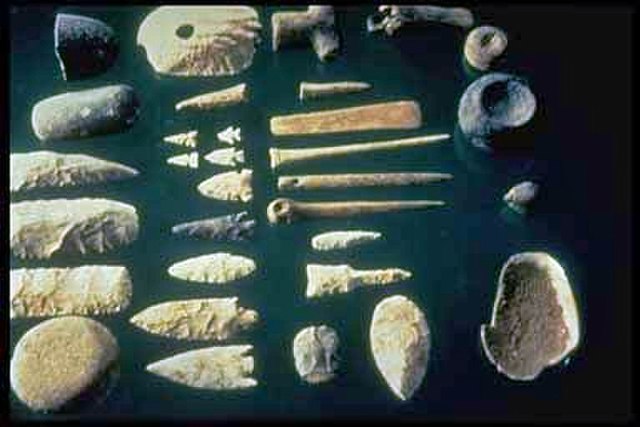In archaeology, a blade is a type of stone tool created by striking a long narrow flake from a stone core. This process of reducing the stone and producing the blades is called lithic reduction. Archaeologists use this process of flintknapping to analyze blades and observe their technological uses for historical purposes.
Flint blade from Lithic reduction - Upper Paleolithic -Brassempouy, France - Muséum of Toulouse
A stone tool is, in the most general sense, any tool made either partially or entirely out of stone. Although stone tool-dependent societies and cultures still exist today, most stone tools are associated with prehistoric cultures that have become extinct. Archaeologists often study such prehistoric societies, and refer to the study of stone tools as lithic analysis. Ethnoarchaeology has been a valuable research field in order to further the understanding and cultural implications of stone tool use and manufacture.
A selection of prehistoric stone tools
A biface (trihedral) from Amar Merdeg, Zagros foothills, Lower Paleolithic, National Museum of Iran
Clovis points from the Rummells-Maske Cache Site, Iowa
An array of Neolithic artifacts, including bracelets, axe heads, chisels, and polishing tools.





